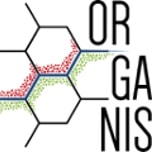| Aronia and blueberry melanoma are rich in anthocyanides, bioflavonoids and antioxidants. These substances care for the health of the cardiovascular system and prevent oxidation processes by sweeping free radicals. A large amount of antioxidants in the diet can slow down the processes associated with loss of vision due to cataracts, glaucoma or macular degeneration. |
| Wild rose contains B vitamins, vitamin A, E, K and C. Additionally, this plant is characterized by a high content of carotenoids, including lycopene or lutein, and these polyphenol compounds including tannins, anthocyanates and flavonoids, e.g. routine. In addition, the wild rose also contains: sugars, pectins, essential oil, organic acids, folates and mineral salts such as calcium, potassium, magnesium, silicon and iron salts. Lutein contained in the raw material undergoes similar changes to lipids. It comes first of all to our eyes, namely to their lenses and so-called macular - extremely important places in the retina of the eye. The yellow spot is located in the posterior and central parts of the retina, responsible for, among others, visual acuity, central vision and high resolution vision. It is in the macular that the most densely arranged are photosensitive retina receptors, suppositories. The presence of xanthophylls (or lutein and zeaxanthin) in the macular is important for the retina of the eye due to its protective role against free radicals. These dyes protect the eye from the harmful effects of light, especially blue, which is destructive to sight. |
| Fireflies in traditional medicine have been used effectively to treat eye diseases such as conjunctivitis, barley, etc. The light bulb also has a documented glycemia lowering effect which may have potential to treat diabetes and also mitigate its complications such as diabetic retinopathy, the effect of which is damage to the blood vessels of the retina of the eye and impaired vision. However, further research is needed to learn about the detailed mechanisms and potential of the plant. (1) |
| The blubber contains cyanide, which breaks down into cyanidine during drying. It is a derivative of anthocyanins, thanks to which the raw material is anti-inflammatory and reducing the permeability of the capillaries walls. Anthocyanins present in the mire improve blood supply within the iris of the eye and thus have a positive effect on visual acuity (especially in difficult lighting conditions). |
| Spirulina has a large amount of protein and vitamins (e.g. A, C, E, B1, B2, B3, B6, B7 and B9), as well as minerals such as zinc, iron, magnesium, sodium, phosphorus, calcium or iodine. In addition, it also contains essential unsaturated fatty acids (including gamma-linolenic acid), chlorophyll, zeaxanthin, lutein, as well as ficocyanin. It allows to compensate for vitamin-mineral deficiency. These substances accelerate tissue regeneration and help the body fight allergy. |
| Research shows that spirulina can serve as a source of well absorbed zeaxanthin, which is one of the main xanthophylls (above lutein) in the macular of the yellow eye. A single dose of 4-5 g of algae may increase the serum concentrations of zeaxanthin from 0.06 to 0.12 μmol/l. This is important in the prevention of eye diseases, since zeaxanthin reduces the risk of cataracts, but also of age-related macular degeneration (2) |
| Velvet – the pharmaceutical industry derives lutein from it to produce tablets and capsules to improve visual acuity, preventing macular degeneration. Lutein and zeaxanthin are the only dyes in the group of carotenoids present in the macular of the yellow eye. They are a natural filter, significantly weakening the adverse effect of light due to yellow colour, absorb mainly the waves of blue light, the most harmful to the retina. |
| Product valued for: |
| Operation from inside and not from outside |
|
|
| (1) http://www.readiness.pl/4656, green-light-action-and-use-medical-state-study.html |
|
| (2) https://pubmed.ncbi.nlm.nih.gov/22313576/ |



